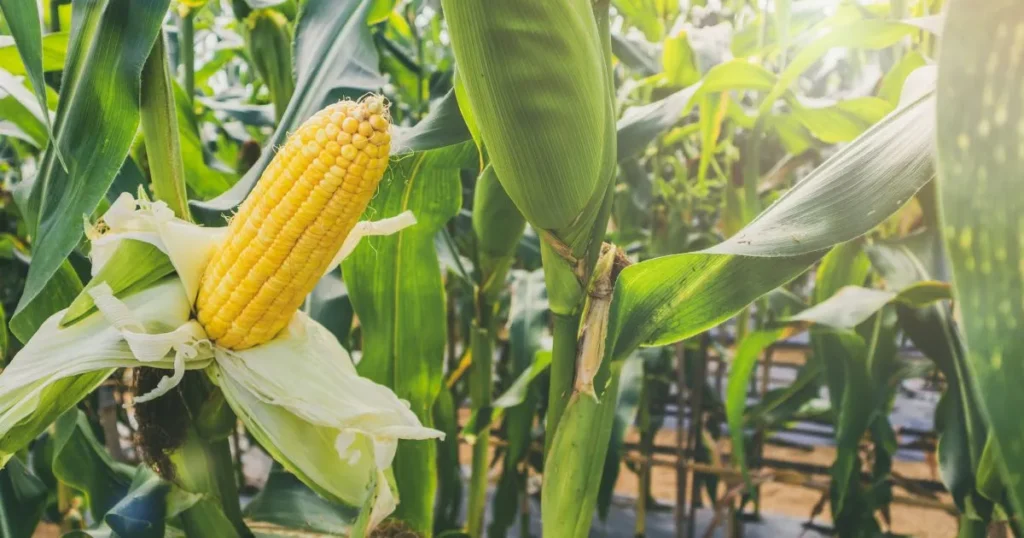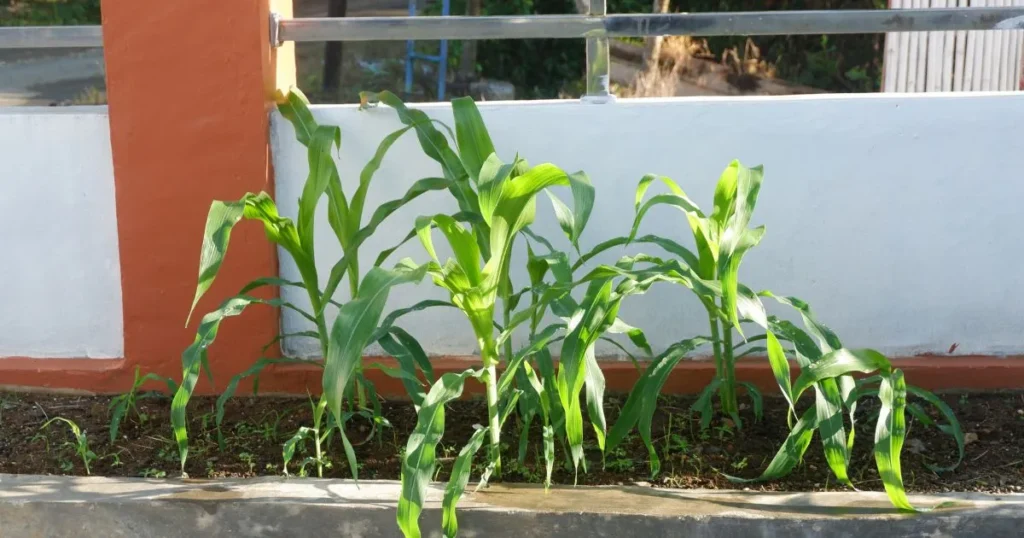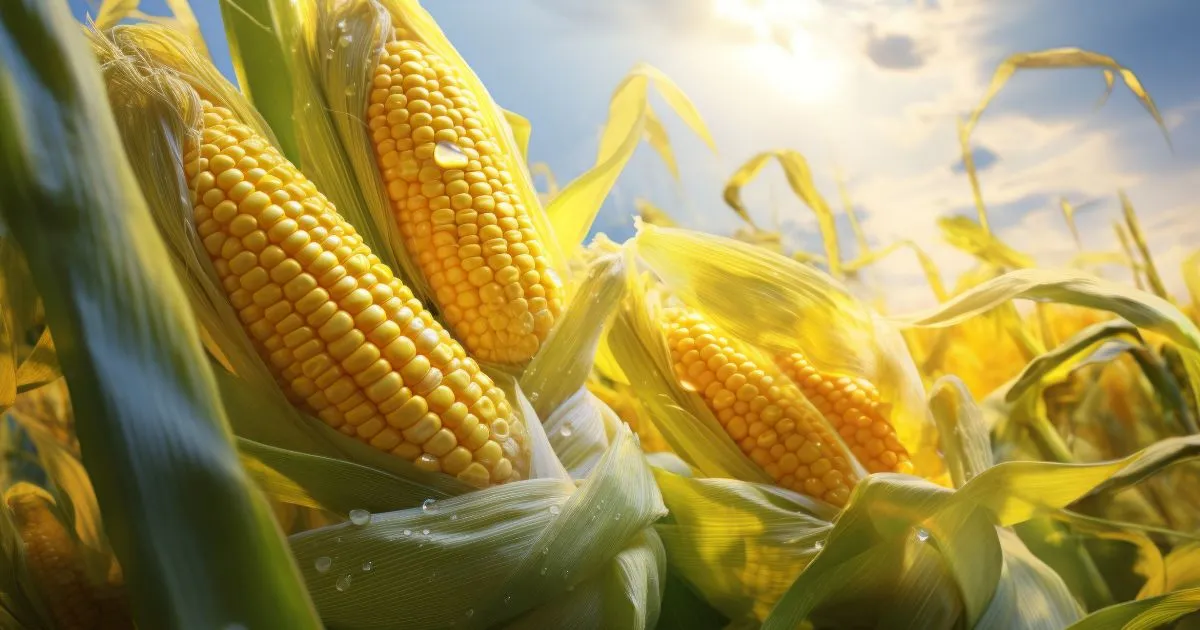Table of Contents
How to Grow Corn :
Corn, also known as maize, is one of the most widely cultivated crops around the world. Whether you’re growing it for personal consumption or for large-scale farming, knowing how to grow corn is an essential skill. In this comprehensive guide, we will provide you with all the necessary information to help you successfully grow corn, from selecting the right variety to harvesting and storing the crops.
Introduction to Growing Corn
Growing corn is a fulfilling and productive experience, but it requires proper planning, care, and attention throughout its growth cycle. Corn is versatile and can be used for a variety of purposes such as sweet corn for fresh eating, popcorn, or field corn for animal feed and industrial products. No matter your reason for planting, understanding how to grow corn is vital for success.
Why Grow Corn?
Growing corn can be an excellent choice for many reasons:
- High yield: Corn provides a significant yield per plant compared to many other crops.
- Versatility: Corn can be used in numerous ways, including as a food source, animal feed, and in industrial applications.
- Self-sufficiency: Growing corn allows you to reduce your reliance on store-bought products.

Choosing the Right Variety of Corn
Choosing the correct variety of corn is one of the first crucial steps to ensure a successful harvest. Corn varieties vary greatly in terms of growth requirements, appearance, and uses.
Factors to Consider When Choosing Corn Varieties
Climate Suitability
- Temperature needs: Corn thrives in warm weather with temperatures between 60°F and 95°F. Choose varieties that are adapted to your local climate.
- Frost tolerance: Some corn varieties are more frost-resistant than others. If you’re growing in an area with unpredictable frosts, look for early-season varieties that mature faster.
Purpose of Corn
- Sweet corn: This type is ideal for fresh consumption and requires relatively shorter growing periods.
- Field corn: Typically grown for animal feed, cornmeal, or even industrial purposes, field corn takes longer to mature but produces a larger yield.
Maturity Period
- Early-season varieties: These are best for shorter growing seasons or areas with cooler climates.
- Mid-season varieties: Ideal for moderate climates with a longer growing season.
- Late-season varieties: Require the longest growing period but offer larger, more robust ears of corn.
Preparing the Soil for Planting
Corn is a heavy feeder, meaning it needs nutrient-rich soil to grow well. Proper soil preparation is crucial for successful corn growth.
Steps to Prepare Soil for Corn (
Testing Soil pH
- Ideal pH: Corn grows best in soil with a pH level between 5.8 and 7.0. You can buy soil testing kits to determine the pH and make amendments accordingly.
Improving Soil Fertility
- Compost and organic matter: Mix in organic matter, like compost or well-rotted manure, to improve the soil’s texture and nutrient content. This will enhance drainage and add essential nutrients.
- Nitrogen needs: Corn requires a lot of nitrogen, especially during early growth stages. Consider adding a slow-release nitrogen fertilizer to ensure optimal growth.
Tilling and Soil Aeration
- Loosen the soil: Till the soil to a depth of 6 to 8 inches to ensure proper aeration and root growth.
- Avoid compacting the soil: Avoid walking on the soil after tilling, as compacted soil can hinder corn root development.
Planting Corn Seeds
Once your soil is ready, it’s time to plant your corn. Timing, spacing, and planting depth are all critical factors for successful corn growth.
Steps for Planting Corn Seeds
Determining the Right Time
- Temperature requirements: Wait until the soil temperature is at least 60°F, as corn needs warm soil to germinate effectively.
- Frost-free period: Ensure there is no risk of frost after planting, as corn is highly sensitive to frost.
Spacing and Depth for Planting
- Seed depth: Plant the seeds 1.5 to 2 inches deep, which provides a balance between seed protection and the ability for the seedling to sprout.
- Row spacing: Space rows 30 to 36 inches apart, giving enough room for the plants to grow without crowding each other.
- In-row spacing: Place seeds 12 to 15 inches apart to allow for proper air circulation and growth.
Fertilizing at Planting
- Balanced fertilizer: Apply a balanced fertilizer with an NPK (nitrogen, phosphorus, and potassium) ratio to support initial growth. If you conducted a soil test earlier, use those results to guide your fertilizer choices.

Caring for Growing Corn Plants
After planting, your corn plants will need consistent care to grow healthy and strong. Regular maintenance during the growing season will pay off with a better harvest.
Essential Care Practices for Corn
Watering Requirements
- Consistent moisture: Corn needs regular watering, especially during the flowering phase when the plants are producing ears. Aim for about 1 inch of water per week.
- Avoiding water stress: Corn can suffer from water stress during critical growth periods, leading to poor kernel development.
Weed Control
- Mulching: Use mulch to suppress weeds, retain soil moisture, and improve soil structure.
- Hand-weeding or hoeing: Manually remove weeds during the early stages of growth to prevent them from competing with your corn.
Pest and Disease Management
- Corn pests: Keep an eye out for pests such as corn borers, cutworms, and aphids. Natural predators like ladybugs can help reduce aphid numbers.
- Disease prevention: Rotate crops every 2-3 years to reduce the risk of soilborne diseases such as corn smut, rust, and blight.
Harvesting and Storing Corn
Harvesting corn at the right time ensures the best taste and preservation of the crop. After harvesting, proper storage is important for keeping your corn fresh.
How to Harvest Corn
Determining When to Harvest
- Sweet corn: When the kernels feel plump and milky when pierced with a fingernail, it’s time to harvest. Typically, sweet corn is ready 18 to 24 days after the silk appears.
- Field corn: Field corn should be left to dry on the stalk until the kernels are hard and the husks are papery. This may take up to 100 days or longer.
Harvesting Methods
- Hand-picking: For small-scale gardens, hand-picking is the easiest method. Twist the ear off the stalk gently but firmly.
- Mechanical harvesting: For larger fields, mechanical harvesters can be used to efficiently collect corn at scale.
Storing Corn After Harvest
Storing Fresh Corn
- Refrigeration: If you plan to eat your corn soon after harvest, keep the ears in the refrigerator for up to a week.
- Freezing: To store corn long-term, blanch the ears in boiling water for 4-6 minutes, then freeze them in airtight bags or containers.
Storing Dried Corn
- Dry storage: For field corn or dried sweet corn, store it in a cool, dry place in sealed containers to prevent mold and pests.
Conclusion
Growing corn is an incredibly rewarding endeavor that requires attention to detail and proper care throughout the growing season. By selecting the right variety, preparing the soil, providing adequate water and nutrients, and harvesting at the right time, you can enjoy a bountiful corn crop. Whether you’re growing sweet corn for your family or field corn for commercial purposes, these steps will guide you towards success.
Frequently Asked Questions (FAQ) about Growing Corn
How long does it take to grow corn?
Corn typically takes between 60 to 100 days from planting to harvest, depending on the variety and environmental conditions. Sweet corn matures faster, while field corn varieties may require a longer growing season.
What are common pests and diseases that affect corn?
Some common pests include corn borers, corn earworms, and aphids. Corn is also susceptible to diseases like rust, smut, and bacterial leaf blight. Regular monitoring and preventative measures are essential to protect your crop.
Can I grow corn in a small garden?
Yes, you can grow corn in a small garden, especially if you choose a dwarf or compact variety. Just ensure that you provide enough space, sun, and nutrients for healthy growth.
Can I grow corn in containers?
While it’s possible to grow corn in large containers or raised beds, you’ll need to choose a compact variety and provide proper care such as frequent watering and adequate nutrients. Make sure the container is at least 12 inches deep for proper root development.

